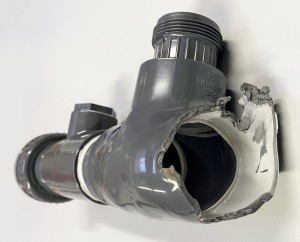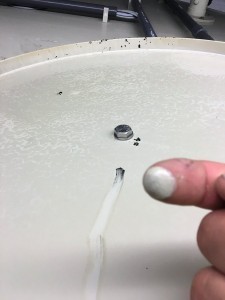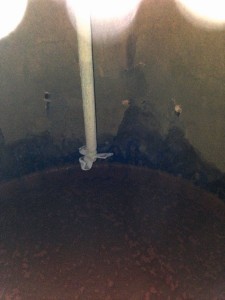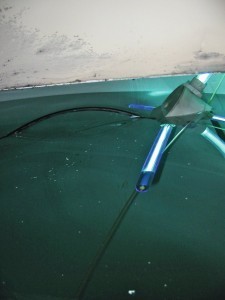Four examples of accidents and damage that have actually occurred in recent years show how important it is to carry out regular technical maintenance on process water and wastewater systems.
Case 1:
A stainless steel pickling plant. When inspecting the approx. 30-year-old wastewater system, traces of corrosion were noticed on the steel-reinforced (and PP-lined) rectangular tank. Further corrosion of the steel reinforcements - especially with this make - would cause the batch reaction tank to burst when it was filled. The operator was immediately informed of this danger. Three months later, the expert received the call and the incident had occurred.
Case 2:
A quotation was presented for a new pipe battery for an ion exchanger circulation system. The main pipe consisted of an approx. 35 year old PVC pipe, DN 125 (mm). Due to carelessness during manual backwashing, the material reacted brittlely to pressure surges from the feed pump. In plain language: PVC splinters flew around the employee's ears. Fortunately, there was no personal injury. An automatic deaerator and a timely clean-up would have prevented the mishap.
Case 3:
A new neutralization system was put into operation. During the evening tour, the dosing hose for sulphuric acid supplied by the specialist company attracted the attention of the managing director: the hose, which was actually transparent, was lit up! During the electrical measurement, it was discovered that the dosing station for acid, which was still being used by the customer, was under 230 volts AC voltage due to a corroded float switch. The current was flowing through the dosing hose via the earthing of the agitator (still approx. 60 VAC). Unfortunately, the external company had forgotten to install an RCD for protection 9 years previously or - even better - to provide 24 VDC for conductive media.
Case 4:
When taking over regular maintenance of a reverse osmosis pure water system, the experts were able to wipe off the polypropylene on the inner wall of the pure water tank in the form of fine dust. The tank was retrofitted with a floating UV lamp for disinfection by another supplier. However, this not only destroyed germs, but unfortunately also the PP tank, which is not resistant to UV-C radiation. The resulting particles were pumped into production, with no known effect on the quality of the goods produced. PE black would be a suitable material.
Conclusion:
Despite the costs, coating companies are well advised to have their process water and wastewater systems comprehensively and regularly maintained and inspected by specialist companies. The recommendations for repair and remediation in the maintenance report must be taken seriously in order to avoid risks to people and the environment as well as unnecessary interruptions to production. The bright and explosive examples described above show how quickly investments can turn to dust when in doubt. And there is something else that those who save at the wrong end forget. A clean-up of the production environment plus the environment plus a new system plus production downtime are certainly more expensive than regular inspections!








